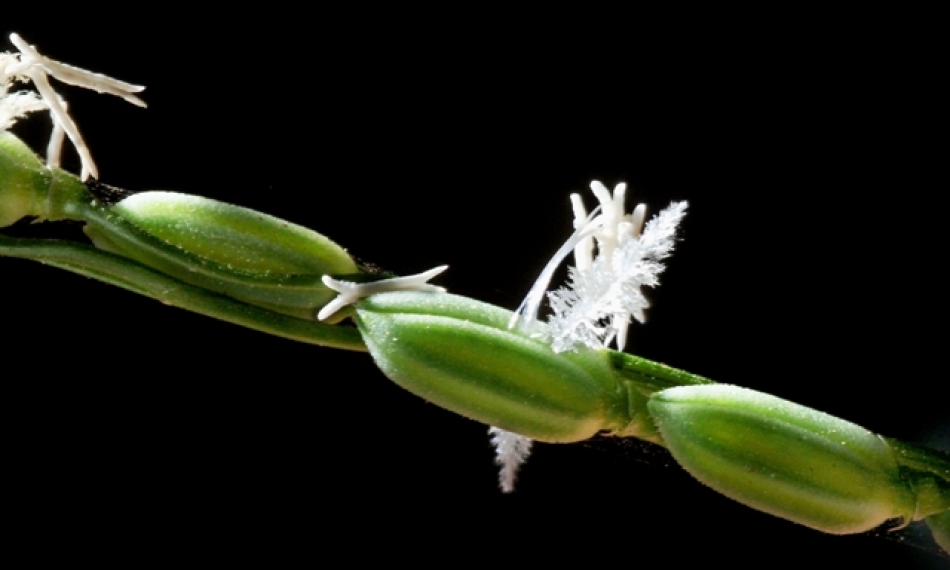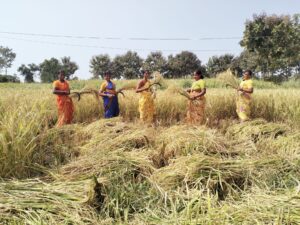
Scientists are scouring the deep and “wild” end of the rice gene pool to help find hidden traits and genes that can help breed new rice varieties better at thriving and producing food in difficult environments.
Although the genetic diversity of cultivated rice is already rich, widening its diversity through its wild relatives is significant, as they possess high-value traits that can help breeders make new rice varieties that can stand up to climate change and other challenges.
Rice has wild or undomesticated relatives, called “wild rice,” that are rich repositories of genetic material that can provide tolerance of environmental stresses and help improve yield. Wild rice diversity is considered to be in the periphery of the rice gene pool, with the center being around varieties cultivated from the two main species of rice: Oryza sativa and O. glaberrima. In total, there are 27 species of rice.
Wild rice’s richness in desirable traits, such as pest and disease resistance, is borne out of centuries of surviving in harsh environments— untended and away from human intervention. These important traits have been infused in cultivated varieties to help protect them against pests and diseases that have affected thousands of hectares of rice farms and have caused millions of dollars of damage.
Helping farmers
The International Rice Research Institute (IRRI) and its partners carry out rice improvement activities using wild rice traits. By way of conventional breeding and modern biotechnological tools, these crucial traits are transferred to cultivated varieties and have resulted in rice varieties with improved resistance to bacterial blight, blast, tungro, brown planthopper, and soil toxicity.
To name a few species, wild rice O. minuta gave breeders genes that contain resistance to bacterial blight, blast, brown planthopper, and sheath blight. Resistance to tungro virus, on the other hand, was found in wild rice O. rufipogon. The opportunities are expanding as more is learned about how to explore the diversity in wild rice to improve cultivated rice. Dr. Kshirod Jena, head of interspecific hybridization breeding at IRRI, stated, “We have now succeeded in transferring genes from almost every species in Oryza, giving access to the full range of genetic diversity in the genus.
“Our latest important result is the transfer of a gene with resistance to brown planthopper fromO. australiensis to a high-yielding brown planthopper-resistant variety for cultivation in South Korea,” said Dr. Jena. “This variety is called Anmi. This is a significant achievement because host-plant resistance is an effective way to control brown planthopper—a pest that has rendered hundreds of millions of dollars in damage across Asia.
“From the same wild rice, O. australiensis, we have identified a blast-resistance gene that will soon be infused in cultivated varieties,” Dr. Jena explained. “But perhaps the brightest prospect from wild rice is that we at IRRI are in the process of transferring yield-enhancing genes from O. rufipogon. In the future, we will develop new varieties that are not only resistant to pests and diseases, but that are also able to give better yield.”
Getting information from wild rice
It is not too much of a stretch to say that agriculture is slowly being pushed into a corner where it is expected to deliver more food with less land, water, nutrients, and other inputs. Not only do farmers have to deal with the blows of climate change to farming environments all over the world, but they will also have to feed 5 billion rice-eating people by 2030.
New rice varieties must adapt to these challenges, meaning that rice plants will have to be bred to produce more food by “arming” them with traits that can stand up to heat, flood, drought, salty soil, pests, and diseases.
Scientists at IRRI and elsewhere depend on the natural genetic diversity of rice for adaptation. Many challenges are yet to be predicted; hence, the conservation and exploration of the genetic diversity of rice—including wild rice—become even more important.
IRRI is also working on genetic sequencing: decoding the genetic information behind the diversity of rice to truly unlock its potential for breeding. Only a few types of rice have been sequenced; however, the sequence of these few types of rice does not reflect the immense genetic diversity of all types of rice—or the very unique diversity in wild rice.
IRRI’s “wild” conservation
IRRI has been conserving the genetic diversity of rice in the International Rice Genebank for decades. There are now more than 114,000 types of rice kept in the seed vaults, and almost 4% of these are wild relatives.
Dr. Ruaraidh Sackville Hamilton, head of IRRI’s T.T. Chang Genetic Resources Center, stressed the importance of being able to collect and catalog these wild species.
“In nature, wild rice grows mainly in unprotected habitats, which can easily be destroyed by urbanization and farming,” he cautioned. “We have to conserve these types safely where we can study them without risk of extinction.”
The wild relatives of rice conserved in the International Rice Genebank, alongside many heirloom and modern varieties, are available for sharing with rice breeders and others, all over the world. With this diversity at their fingertips, rice breeders can continue to bring together the best traits from wild rice and the best traits from domestic rice to provide rice farmers with improved rice varieties to face the challenge of feeding the world.
____________________________
Ms. Baroña is a science communication specialist with IRRI’s Communication Unit.








